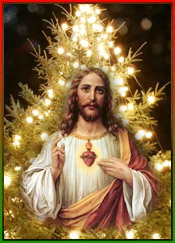 Apart from the fun and enjoyment, knowing the religious aspect of Christmas is equally important. As per the Bible, there is no set of rules or procedure, according to which Christmas has to be celebrated. Thus, there is an immense number of customs that surround Christmas, and it varies from country to country. Many aspects, such as the Christmas tree, the Yule Log and the exchange of gifts are taken from the earlier pagan holiday of Romans. In most Western countries, Christmas celebrations have both religious and secular aspects.
Apart from the fun and enjoyment, knowing the religious aspect of Christmas is equally important. As per the Bible, there is no set of rules or procedure, according to which Christmas has to be celebrated. Thus, there is an immense number of customs that surround Christmas, and it varies from country to country. Many aspects, such as the Christmas tree, the Yule Log and the exchange of gifts are taken from the earlier pagan holiday of Romans. In most Western countries, Christmas celebrations have both religious and secular aspects.
Because of the lack of Biblical instructions, Christmas rituals have been shaped by the religious and popular traditions of each culture that celebrates the holiday. Traditionally, the sacred Christmas season starts with Advent, which begins on the fourth Sunday before Christmas and continues to Christmas Day. The sacred season ends on Epiphany, January 6.
The AdventDuring Advent, Christians make preparations for the commemoration of Jesus' birth on December 25. Each of the four weeks symbolizes a different way in which believers perceive Christ: through the flesh, the Holy Spirit, death, and Christ's judgment of the dead. The Advent wreath, which consists of four candles anchored in a circle of evergreen branches, originated with German Lutherans; the tradition has been adopted by many churches and families. At the beginning of each of the four weeks preceding Christmas, Christians light an Advent candle as they say a prayer.
Christmas EveOn the Christmas Eve, churches around the world hold evening services. At midnight, most Catholic and many Protestant churches hold special candlelight services. The Catholic "Midnight Mass" was first introduced by the Roman Catholic Church in the 5th century. Christmas Masses are sometimes solemn and sometimes buoyant, depending on the particular culture that conducts them. On this day the worshipers enter the church in communal processions. Church services often feature candlelight and music. Some also include a dramatization of the Biblical story of Jesus' birth.
Christmas DayChristmas observances have also assimilated remnants of ancient rituals such as the custom of burning Yule logs; the Yule log symbolizes the victory of light over the darkness of winter. The tradition of lighting the Yule log is still observed, especially by Europeans. Families light the log on Christmas Eve and keep it burning until Epiphany.
The Exchange Of GiftsChristians traditionally exchange gifts as a reminder of God's gift of a savior to humankind. Gift giving also recalls an ancient Roman custom of exchanging gifts to bring good fortune for the new year. In most cultures that celebrate Christmas, a mythical figure delivers gifts to children. Since the 19th century, Santa Claus and other mythical gift givers have become increasingly gentle, generous, and forgiving.